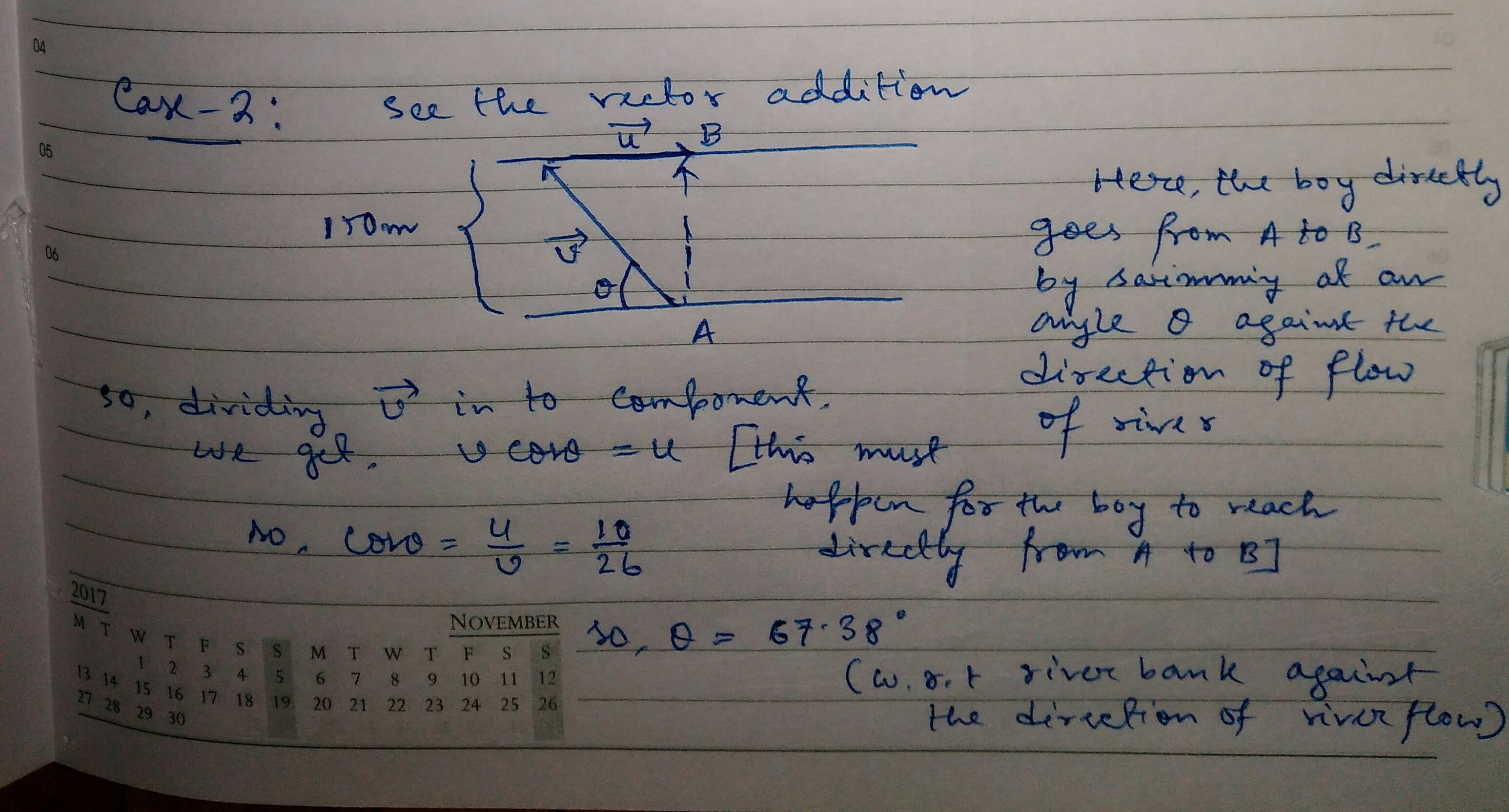A boy can swim with a speed of 26m/s in still water. He wants to swim across a 150m river from a point A to point B which is directly opposite the other side of the river. The river flows with a speed 10m/s?
- If he always swim in the direction parallel to AB, find how far he lands downstream of B.
2.in what direction relative to the bank must the boy swim so as to cross directly from A to B
- If he always swim in the direction parallel to AB, find how far he lands downstream of B.
2.in what direction relative to the bank must the boy swim so as to cross directly from A to B
1 Answer
Feb 26, 2018
Please see below
Explanation:

Note about one thing,why in the
In the

